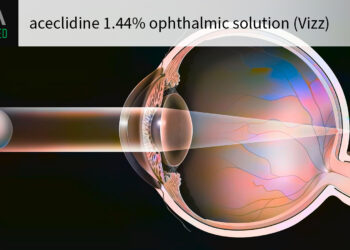New data from subgroup analyses of trials evaluating endovascular treatment in patients with stroke due to occlusions of distal or medium arteries has given some hope that there may be a population who could benefit from such an approach.
The DISTAL and ESCAPE-MeVo trials, which were both first presented earlier this year, showed remarkably similar results, with no clinical benefit found in the endovascular approach in patients with stroke due to distal/medium artery occlusions, and the feeling was that this procedure would likely not have a role in this population.
However, new analyses from both trials suggested that endovascular treatment may benefit a subset of patients with distal or medium artery occlusions.
In the ESCAPE-MeVo trial, the key factor associated with improved outcomes was time: Patients treated within 3 hours of symptom onset showed clinical improvement compared with those who received the best medical therapy alone.
In the DISTAL trial, investigators found that while endovascular treatment was not associated with a clinical benefit based on the study’s primary outcome, imaging suggested a reduction in the size of the brain area affected by stroke — an effect that correlated with clinical outcomes. They also identified a subgroup more likely to benefit patients with more severe strokes and larger infarct volumes at baseline.
“We are now in a more hopeful place than we were in February when we reported the main results. There are hints that there may be some patients who do benefit from endovascular treatment strategy,” senior ESCAPE-MeVo investigator Michael Hill, director of the Stroke Unit for the Calgary Stroke Program, Alberta Health Services, Edmonton, Alberta, Canada, told Medscape Medical News.
DISTAL lead investigator Marios Psychogios, MD, of University Hospital Basel, Basel, Switzerland, said the initial results showed no clinical benefit, but subsequent imaging has revealed a different perspective.
“When we first reported this trial and the results were neutral, we could not demonstrate a clinical benefit. But we are now seeing that there is a benefit to the brain seen in the imaging results. While we cannot see a benefit in clinical outcomes as measured on the Modified Rankin Scale (mRS), we can detect an improvement with endovascular therapy on brain tissue saved.”
He went on to explain that the team is now focused on identifying patients most likely to benefit.
“With this imaging data, we are trying to find a group that profits the most and maybe could show a clinical benefit. We believe there will be a group of patients who will benefit clinically from endovascular therapy,” Psychogios added.
These new analyses from the two trials were presented on May 21 at the European Stroke Organization Conference (ESOC) 2025.
New ESCAPE-MeVo Data — Need for Speed
The ESCAPE trial enrolled 530 patients with acute ischemic stroke due to medium-vessel occlusion who presented within 12 hours of last being known well and had favorable baseline noninvasive brain imaging. Participants were randomly assigned to receive endovascular therapy with the Solitaire X device plus usual care or usual care alone.
The trial’s primary outcome — a favorable functional result defined as a mRS score of 0 or 1 at 90 days — occurred in 41.6% of patients in the endovascular group and 43.1% in the usual care group (adjusted rate ratio, 0.95; 95% CI, 0.79-1.15; P = .61), showing no significant difference between the groups.
In his presentation, Hill reported that the median time to randomization was approximately 4 hours after stroke onset. Subgroup analysis revealed both qualitative and quantitative interactions between treatment impact and time.
“Early treatment (less than 180 min from onset) associated a strong positive benefit, while late treatment (more than 180 min from onset) is associated with harm,” he said.
Among patients randomly assigned within 2 hours of symptom onset, the risk ratio for achieving a favorable clinical outcome (mRS score 0 or 1) with endovascular therapy was 1.47 (95% CI, 0.90-2.39), corresponding to a number needed to treat (NNT) of 6.
For those randomly assigned between 2 and 3 hours, the risk ratio increased to 1.60 (95% CI, 1.02-2.51), with an NNT of 5.
However, beyond 3 hours from stroke onset, endovascular therapy was associated with harm. Patients randomly assigned between 3 and 4 hours had a risk ratio of 0.67 for achieving a favorable outcome, whereas those randomized after 4 hours had a risk ratio of 0.77. The interaction between treatment impact and time was statistically significant (P = .001).
“We found that in these patients with middle artery occlusions, speed of treatment really matters. It looks like we can treat these patients with an endovascular approach early, but we definitely need to avoid treating them late,” said Hill.
Although these findings are still preliminary, coming from a subgroup analysis of a neutral trial, Hill said he believed the observation is plausible and likely reflects a real effect.
Hill explained that occlusions occurring farther along the arterial tree are more likely to involve end arteries — vessels without an alternative blood supply — making the affected brain tissue especially vulnerable to rapid brain tissue damage when blocked.
“This fits in with our observation that we are seeing a much more dramatic effect of time in these middle artery occlusions than in large vessel occlusion strokes, and the need for speed becomes much more important,” he said.
Hill said that, in light of these findings, he has begun using an endovascular approach in patients who present early — and are already seeing positive results.
The ESCAPE-MeVo investigators also found that collateral flow seems to play a role and that patients with good collateral circulation in the affected brain region were more likely to benefit from endovascular treatment.
“This finding was much less robust than the time results, but it follows the same line of thinking. It makes sense that patients with evidence of collateral flow in the affected area would benefit more, as the collateral flow would give us more time to get the occluded artery open. These patients are the lucky ones who have got an appropriate circulation, which allows more time for us to act,” said Hill.
Imaging Data From DISTAL
The DISTAL trial enrolled 543 patients with acute ischemic stroke caused by isolated occlusions of medium or distal vessels. Participants were randomly assigned to receive either endovascular therapy or best medical treatment alone within 24 hours of symptom onset or last known well, provided that neuroimaging indicated salvageable brain tissue.
The primary outcome — disability level at 90 days, assessed by the mRS — did not differ significantly between the groups. The common odds ratio for improvement on the mRS was 0.90 (95% CI, 0.67–1.22; P = .50).
The latest imaging data from the DISTAL study were presented at the ESOC meeting by Aikaterini Anastasiou, MD, of University Hospital Basel.
This preplanned analysis focused on the proportion of patients who retained more than 80% of the brain tissue at risk at 24 hours. Among the 447 patients with advanced imaging data available, 209 met this endpoint.
Patients who received endovascular treatment were more likely to achieve this favorable imaging outcome — 52.6% compared with 40.7% in the best medical therapy group — corresponding to an adjusted odds ratio of 1.57 (P = .023). This imaging outcome was also associated with better clinical results in both treatment groups.
Psychogios told Medscape Medical News that the mRS may not be the most appropriate tool for assessing clinical outcomes in patients with distal occlusion stroke, as these strokes generally result in less severe functional deficits compared to large vessel strokes.
“It is difficult to show a treatment benefit on the mRS scale in these patients, but looking at what is happening in the brain with imaging is a proven endpoint and is highly relevant for patients,” he said.
Psychogios noted that the DISTAL investigators are currently conducting a more detailed analysis of the imaging data to better identify patients who are most likely to benefit from endovascular therapy.
They believe they have found such a subgroup — patients with higher baseline clinical deficits (National Institutes of Health Stroke Scale/Score > 6) and larger stroke volumes on initial imaging (> 60 mL of at-risk brain tissue on perfusion scans).
Investigators from both trials are now collaborating to refine these findings and further define the patient population that could benefit from endovascular treatment.
“Together, the two presentations give more hope that with better patient selection we will be able to show that endovascular therapy can help this some patients with distal or middle artery occlusion strokes,” said Psychogios.
“In the initial trials I think we were probably too broad in our inclusion criteria, and we showed that this is not a technique that should be applied to this broad patient population. But still there seems to be a group that can profit from the endovascular approach,” he added.
Hill noted that two additional trials in patients with distal or medium artery occlusions — one from France and one from China — are expected to report results later this year.
“So, we are planning to put the data from all four trials together to give us more information on how to go forward with finding the right subgroup of patients with distal/middle artery occlusions who could benefit from endovascular therapy.”
Peter Kelly, MD, a neurology professor at University College Dublin, Dublin, Ireland, who was not involved in the studies, said the results are noteworthy. He highlighted that the ESCAPE-MeVo data emphasized the critical role of early intervention, whereas the DISTAL findings suggested that patients with more severe strokes may benefit. Together, the results pointed to the potential value of a more targeted approach to endovascular therapy in this population — an idea that warranted further investigation in future trials, he said.
The DISTAL trial was funded by the Swiss National Science Foundation, Gottfried and Julia Bangerter-Rhyner-Stiftung, Medtronic, Stryker Neurovascular, Phenox, Rapid Medical, and Penumbra. The ESCAPE-MeVO trial was supported by grants from the University of Calgary, Calgary, Alberta, Canada; the Canadian Institutes for Health Research; and Medtronic.
Psychogios reported receiving grants/speaker fees from Stryker Neurovascular, Medtronic, Phenox, Penumbra, Rapid Medical, and Acandis. Hill reported receiving grants from Medtronic for the ESCAPE-MeVO trial.
Source link : https://www.medscape.com/viewarticle/endovascular-therapy-shows-promise-select-distal-medium-2025a1000d6r?src=rss
Author :
Publish date : 2025-05-26 08:00:00
Copyright for syndicated content belongs to the linked Source.














